What happens when your protagonist and his men are caught in a siege of a medieval city somewhere in fantasy land and need help fast? You sent in the Japanese Self Defence Force’s airmobile brigage of course, complete with frame by frame remake of a certain scene from Apocalypse Now. From Gate, in which a dimensional portal opens up in the middle of Tokyo and a fantasy army straight out of Tolkien attacks through it and learns what it means to take on a modern military when the JDSF crossed the portal in the opposite way. Not as militaristic or rightwing as it could’ve been.
Anime
Unexpected treasures
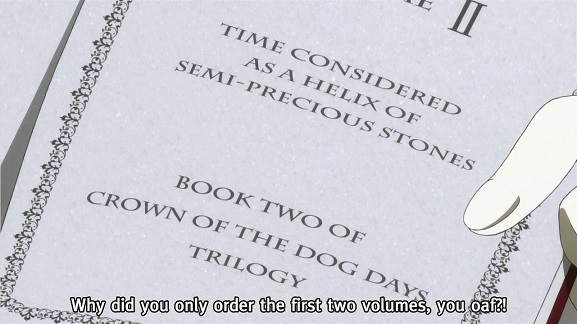
Dantalian no Shoka is a 2011 well written weird mystery anime series with a decidedly bookish bent, set in the nineteen twenties. It stars an ex-World War i fighter pilot who inherits his grandfather’s title and estate, but in return has to take care of his mystical library, which this being an anime, comes in the form of a gothic lolita girl called Dalian. I’ve been watching it off and on for the last couple of days and episode four was a particular delight. Not only was it basically an adaptation of Misery, with a deranged fan keeping a writer prisoner, killing him each day to motivate him to write the proper ending to his trilogy, there was also the shipping war between her and Dalian about which of the characters should end up with whom and as the icing on the cake, a shoutout to Delany right at the start of the episode. Which you just don’t expect to see in an anime, even such a literary one.
Gods cannot do wrong — Noragami
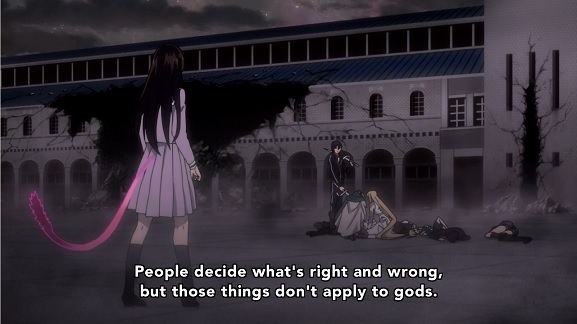
Noragami Aragoto is the second season of the Noragami series, at first glance just your typical fantasy action anime, about a gods who armed with weapons created of restless spirits fight off demons and other supernatural menaces, loosely based on Japanese mythology/religion. What set it apart was the relationship between the three main characters: Yato, a god of war/misfortune, down on his luck and without any followers, his spirit weapon Yukine, a teenage boy turned restless spirit and Hiyori Iki, a normal school girl until an accident left her halfway between life and death and able to separate her soul from her body. The first season explored that relationship, the way each depended on the others, as well as Yato’s history as a god of misfortune and the way the gods worked in general. The second season just had its sixth episode, which concludes the first story arc, in which Yato’s past with Bishamon, a much more powerful and successful war god is used to manipulate the latter into self destruction.

And at the climax, it echoes one of the key points of the previous season, something that annoyed me at the time: the idea that the gods cannot do wrong, that the very notion of right and wrong is a human concept inapplicable to them. At the time it was presented as a justification for some of Yato’s less savoury behaviour, a fairly typical defense of the idea that the gods are above such human concerns. Here however we get the other side of the coin: if gods cannot do wrong, humans are allowed to make mistakes. You learn by your mistakes and if you’re never allowed to be wrong, you cannot learn or grow. That’s a theme that’s been present in the background of the entire series, now finally stated out in the open as the most destructive and unnecessary conflict in the series comes to an end. Where Yato and Yukine almost had to destroy each other to grow last season, here it’s Bishamon’s self destruction, fed by the villain’s manuipulations that finally forces her to grow up.
It’s this sort of thing that makes Noragami Aragoto my second favourite anime of this season, after concrete Revolutio.
This week I’ve mostly been watching…
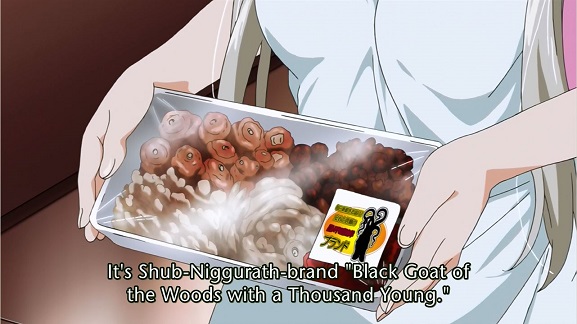
…Haiyore! Nyaruko-san. How can you not like an anime series which features Nyarlathotep, out off Lovecraft’s Chtulhu mythos, reinvented as an energetic alien girl with a thing for the male lead and who advertises herself as “the creeping chaos always smiling beside you”? Especially when it features gags like the one above.
Concrete Revolutio was made for me
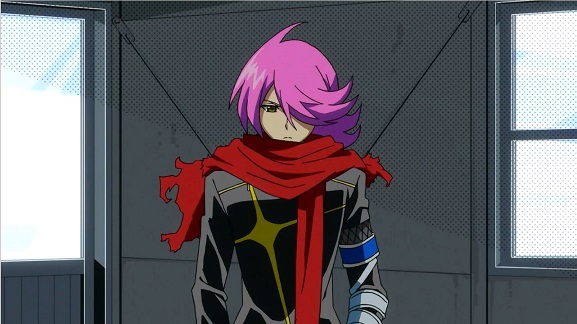
Really, everything from the zip-a-tone patterns in the background to Jirō’s jacket gives me pleasure. Every new episode brings new wonders; this is a series I watch for the world building rather than the plot. As i said before, this really is Astro City: the anime, mixing and matching half a century of anime tropes and archetypes and creating its own pastiche universe out of it, the sum greater than the parts. This is one of the few series in which a magic girl can stop a robot detective from blowing up a World War II vintage female android by transforming the rocket he’s firing into a flower…
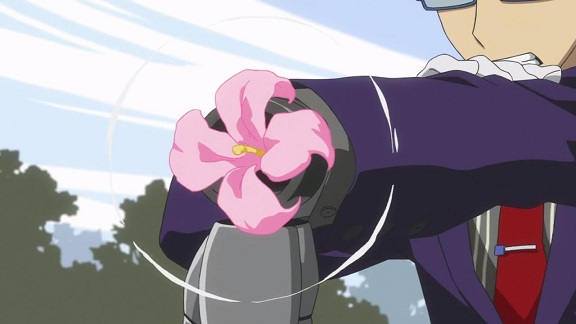
Three episodes in the structure of the show has become much clearer. Though there are hints of an overarching plot, so far this has been more of a “monster of the week” type show, with a problem and resolution in the same episode. So the first episode showcased the magical girl, the next one had a shapeshifting ghost, while this one not only has two WWII androids, but also a robot detective with the memories of a murdered police inspector. I like this, I like that the series doesn’t feel the need to hurry with its plot but takes the time to flesh out its world. Luckily it has the time to do so, as this is a two cour series, meaning it will run for half a year and twentyfour episodes.
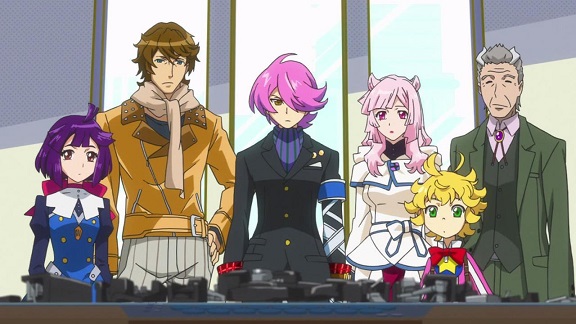
Concrete Revolutio is basically a superhero show, but because it makes uses of Japanese genre tropes rather than the more familiar American, it feels slightly odd. The characters don’t neatly fit into superhero niches. It reminds me of some of the attempts to force classic British comics heroes into the superhero mold. I’m not quite sure what to expect and I like that feeling.